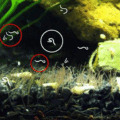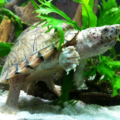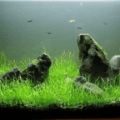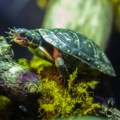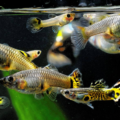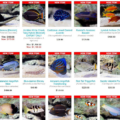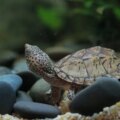Chrysemys picta dorsalis is a beautiful Painted Turtle subspecies perfect for aquarists of all levels. The expert tips in this guide prepares you to keep Southern Painted Turtles in a home aquarium or outdoor pond. Including identification, tank setup, healthcare, breeding instructions, and much more!
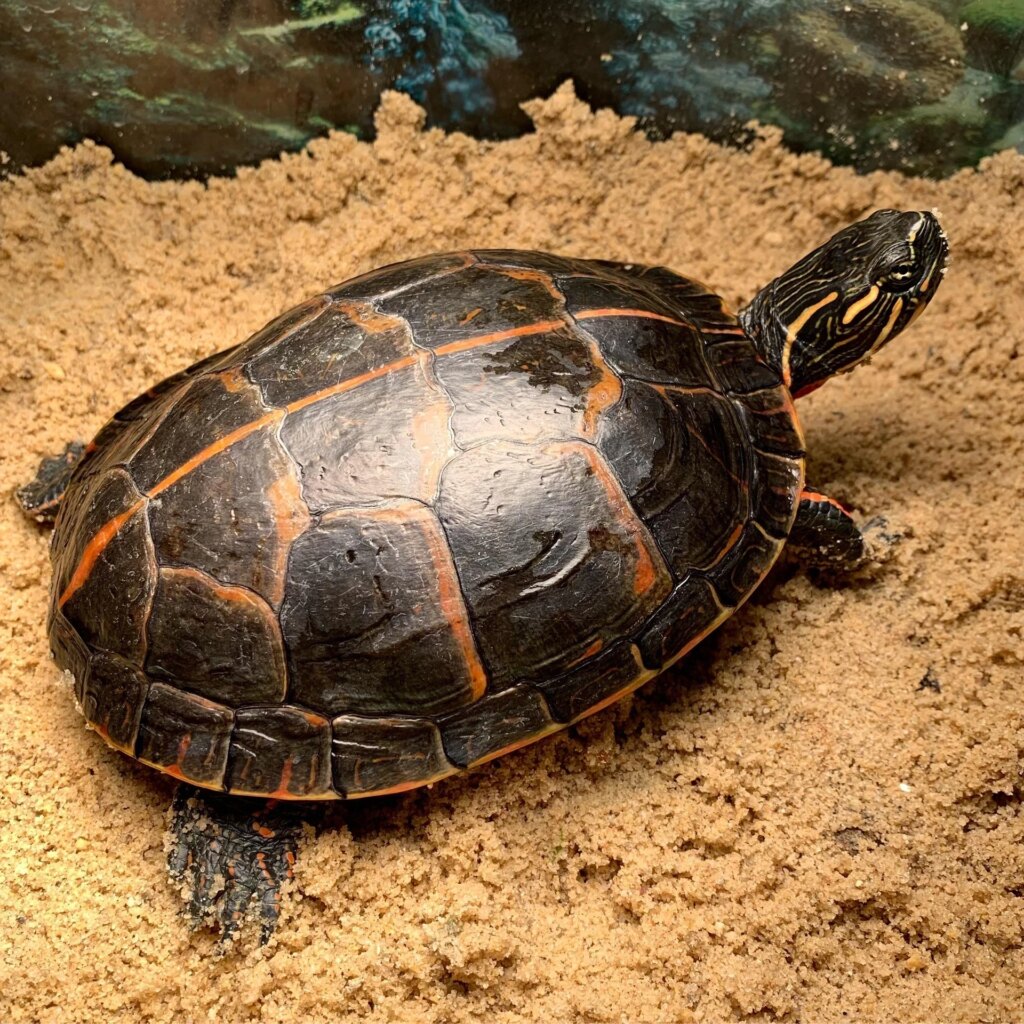
Introduction
Have you heard of Painted Turtles and wondered why they have different colors? That’s because there are several subspecies of the Chrysemys picta family, grouped by their distinct features and natural habitats.
The Southern Painted species is a red-striped aquatic turtle native to South-Central America. Any aquarist can handle Chrysemys picta dorsalis’s care and keep it healthy in a home aquarium or pond.
Read this Southern Painted Turtle overview for details, including breeding, environment setup, diet recommendations, and overall healthy lifespan tips.
Author’s Note: Check out our post The 14 Types of Freshwater Turtles for even more great semi-aquatic pets!
Habitat Design for Southern Painted Turtles: Shallow, Warm, and Spacious
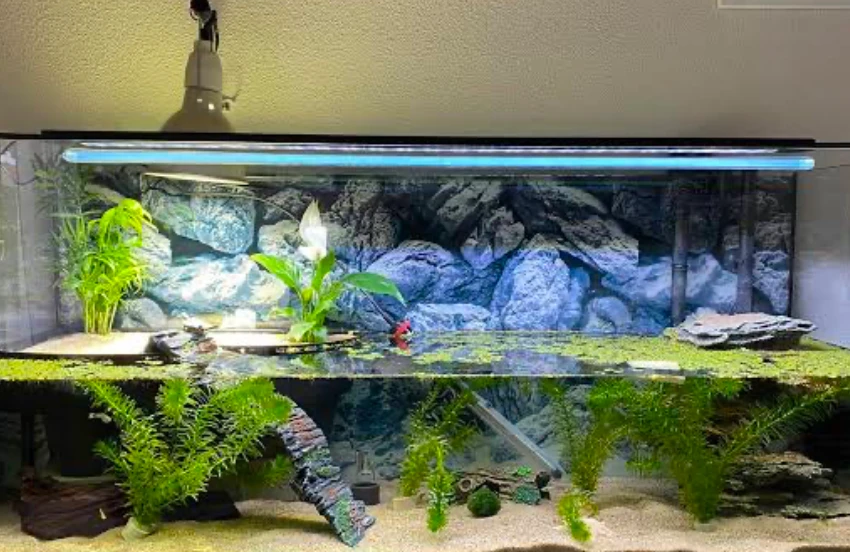
When designing your Southern Painted Turtle tank setup, consider essentials from its natural habitat, such as ample swimming space, basking areas, and clean, warm water.
Tank Size Recommendation
Get a minimum tank size of 40-55 gallons for one adult, which grows about 5 – 20 inches (13 – 25cm) long. Then, mark out a space for shallow water, a basking platform, and decor.
Water Parameters
Southern Painted Turtles need shallow to moderate water levels with stable temperatures between 75–80°F, which is warmer than most turtle habitats.
| Temperature | 75 – 80°F Water | 80 – 85°F Basking Area |
| Condition | Dechlorinated |
| PH | 6.0 – 8.0 |
| Depth | 18 – 22 inches deep |
Author’s Note: Knowing Why your turtle tank water turns green? (Cause & Fixes) will be useful in the upkeep of your turtle’s enclosure.
Your Southern Painted Turtle will need strong filters to clean their water because they produce a significant amount of waste. For the best result, use a single or double-canister filter like any of these 7 Best Filters for Your Turtle Tank, which is an in-depth guide on the best turtle tank filtration systems.
Basking Zone
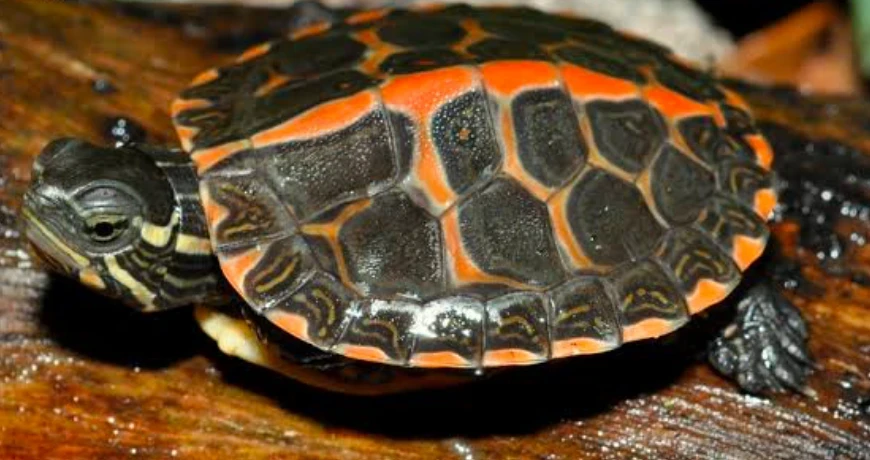
Always use a dry dock or platform with an accessible ramp to the basking habitat for turtles. Add UVB lighting with a heat lamp to keep the basking spot warmer than the water.
Decor
We’ll finish designing our aquatic turtle environment by choosing suitable decor and substrate to replicate the marshy ponds of South America. Safety and comfort should guide your choices over aesthetic value.
Use muddy or sandy substrates with aquatic vegetation like floating plants. Add smooth large rocks and driftwood for enrichment and safe hiding spots when your Southern Painted Turtle wants a break.
Personality & Behavior: Peaceful Yet Active Swimmers
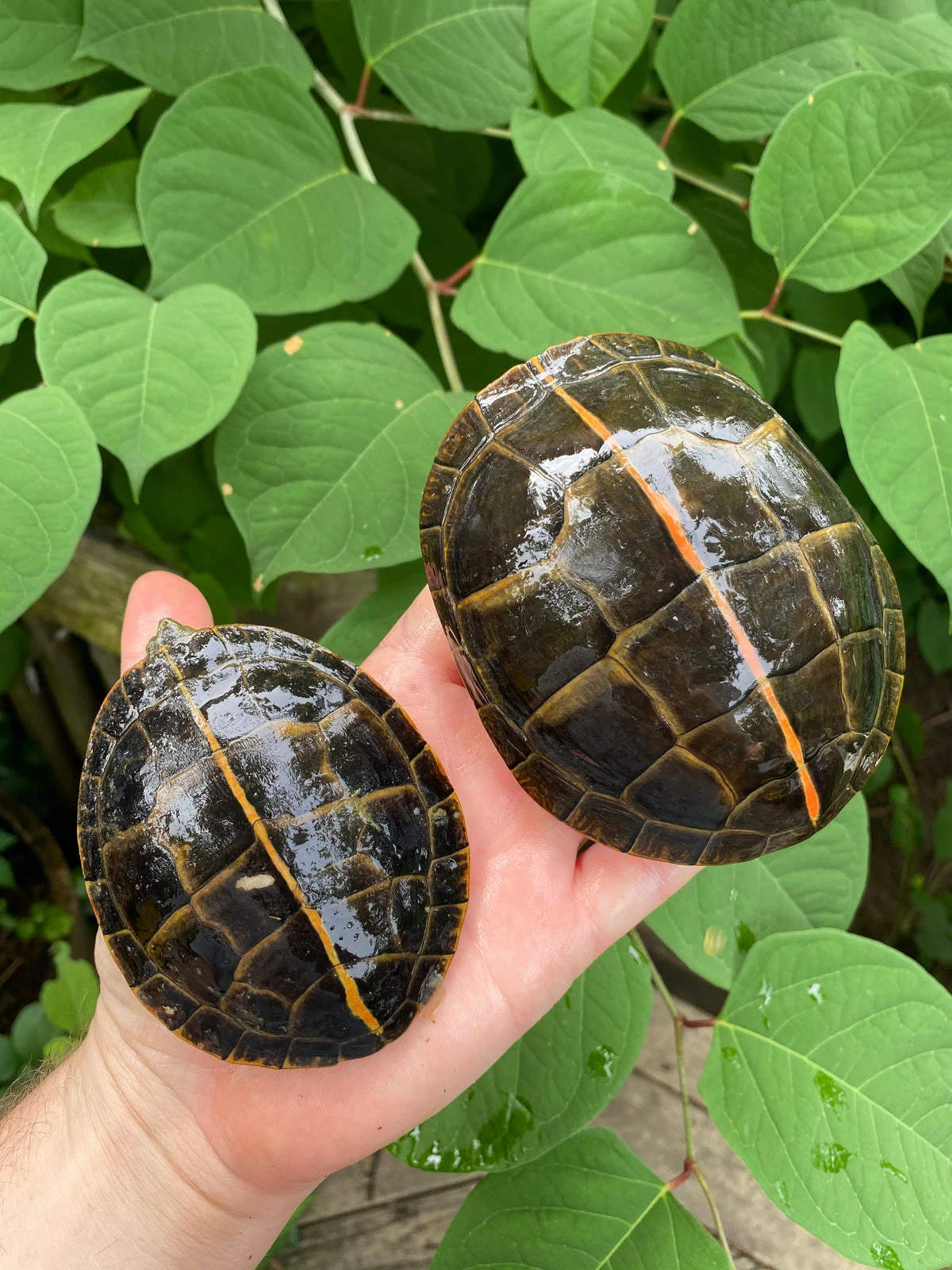
Chrysemys picta dorsalis’ activity level depends on their health status and environmental factors.
They’re peaceful yet curious explorers that routinely exhibit turtle-basking behavior, which is why we cannot stress enough to add adequatev basking zones.
However, they may get aggressive when uncomfortable, whether with their surroundings or tank mates.You can manage your painted turtle’s temperament by choosing only compatible tank mates and keeping the water clean with gentle filtration.
Tank Mate Compatibility: Peaceful But Territorial in Small Spaces
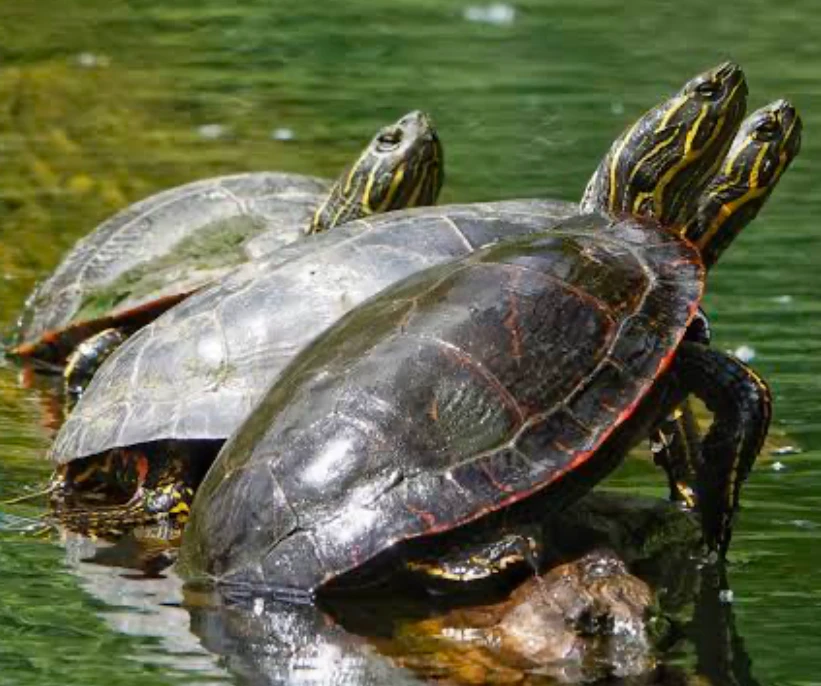
You can achieve peaceful turtle cohabitation between your Chrysemys picta dorsalis and other species that won’t compete for basking spots or space.
It’s one of the benefits of keeping this species, besides other turtle types that prefer living alone. Be very observant, however, if you do decide to kerp this turtle in a group setting to ensure each turtle is getting what it needs and not being bullied.
Here are some tips for testing aquatic turtle compatibility and achieving harmony in your aqua community.
Compatible Species
When choosing compatible Southern Painted Turtle tank mates, look for species temperament, environmental needs, diet, and size. Using these points, here are some compatible species for your semi-aquatic pet:
Other Painted Turtles – Northern, Midland, and Eastern varieties.
Small fish like Danios and large fish like Tiger Barbs and Gouramis with caution.
As well as large Mystery snails that won’t be eaten.
Avoided Species
To avoid aggression and territoriality, provide adequate basking areas when keeping multiple turtles in one tank.
Avoid aggressive turtles like Snapping turtles and territorial fish like Triggerfish, Wolf cichlids, and Oscars. If left unchecked, these fish will bully your turtle.
Feeding Your Southern Painted Turtle: A Colorful Diet for a Colorful Shell
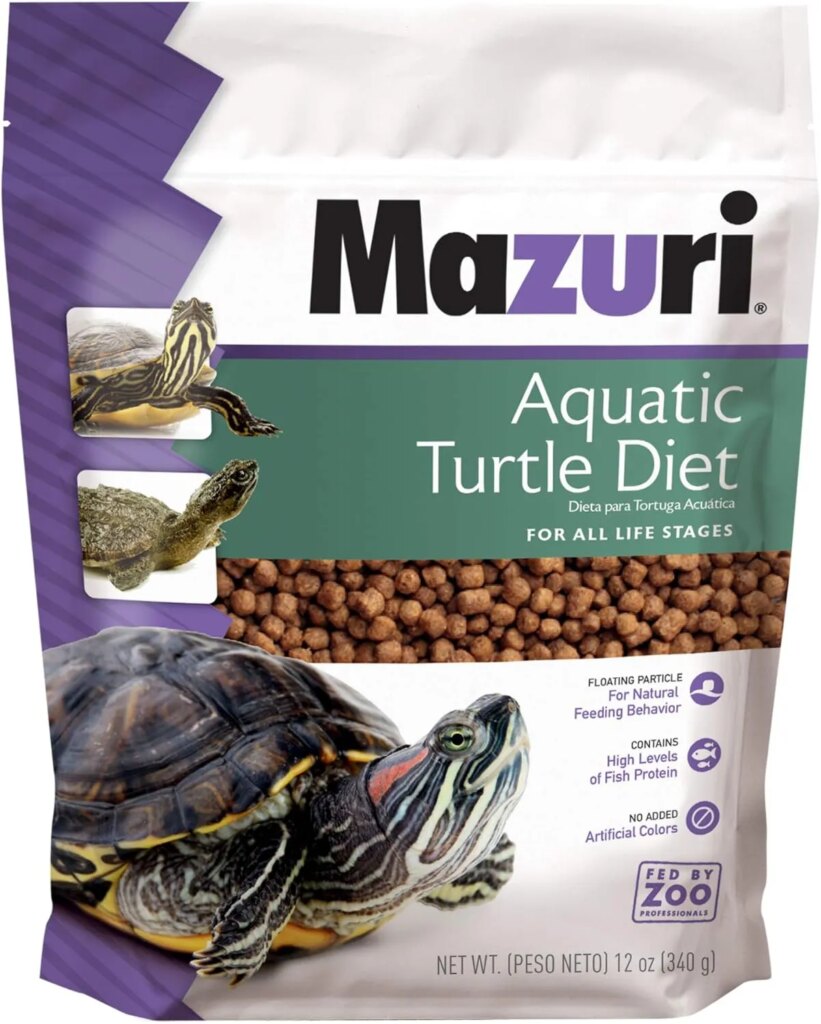
Found On Amazon
Provide nutrition for painted turtles through a balanced, varied diet to maintain their well-being and shell color. They’re omnivores who eat animal matter and plant-based foods but in different proportions depending on their age.
Diet Items
Add commercial turtle pellets, insects, aquatic plants, and dark leafy greens to your Southern Painted Turtle’s diet. Focus on carnivorous foods for juveniles under a year old and switch to more plant-based meals once they mature.
Author’s Note: Check out our Complete Guide To Turtle Food: What To Feed And Why It Matters for detailed food recommendations!
Feeding Frequency
The aquatic turtle’s feeding routine differs based on age and developmental needs. Juveniles must eat daily, while adults may feed every 2 – 3 days.
And if you are struggling with a turtle that just won’t eat check out our post on the 8 Reasons Why Your Turtle Won’t Eat (Tips & Fixes) for causes and fixes.
Calcium Source
Supplement your Southern Painted Turtle’s meals with cuttlebones or calcium blocks for shell support and vitamins for strengthened immunity.
Reproduction and Breeding Behavior in Captivity
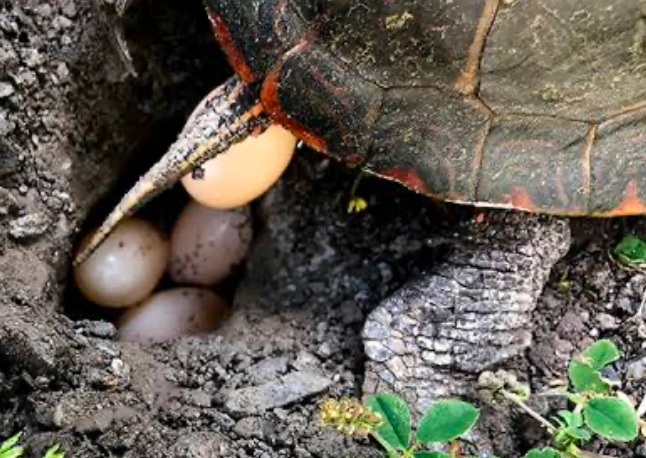
Here are some painted turtle breeding habits, including general mating behaviors, nesting preferences, and how to manage egg incubation, to help you reproduce more of these red-lined species.
Courtship
This species courts and mates in warm water during spring or early summer until autumn. The males perform a mating ritual by caressing the females’ faces and waiting for approval. If she accepts, mating happens underwater.
Nesting Site Needs
Southern Painted Turtle egg-laying happens on land, so provide a dry area in the breeding enclosure with moist soil or sand and a heat lamp reflecting direct UVB light.
After laying her eggs, the female Southern Painted Turtle leaves the egg care to you.
Hatchling Care
Hatchling care for Chrysemys picta dorsalis involves providing a healthy environment and adequate nutrition. The enclosure should have shallow water with gentle filtration for cleanliness, UVB lighting to strengthen the shells, and accessible basking areas to encourage climbing.
Health & Shell Care: Preventing Common Issues
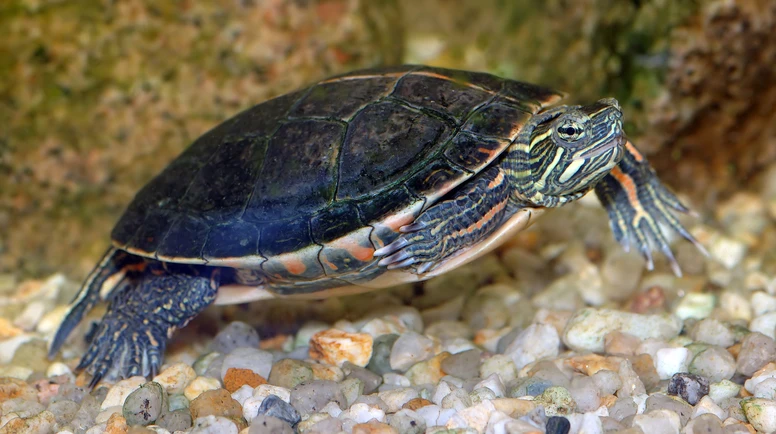
Follow the Southern Painted Turtle health tips provided in this guide to reduce the risk of common turtle health problems, such as shell rot, respiratory infections, or soft-shell disease.
Observe your pets daily for signs of illnesses and immediately treat them to prevent spread or complications.
Preventative Measures
With proper aquatic turtle shell care, such as UVB exposure, clean water, proper filtration, and periodic checks, you can avoid most common Southern Painted Turtle illnesses.
Scroll up for details on preventative tips already covered in this overview.
Common Symptoms
Soft shells, cloudy eyes, loss of appetite, and lethargy are common signs of illness in turtles. Immediately quarantine the affected pet, change the water, improve the diet, and use antibiotics or medicine to heal it.
Lifespan and Long-Term Ownership of Southern Painted Turtles
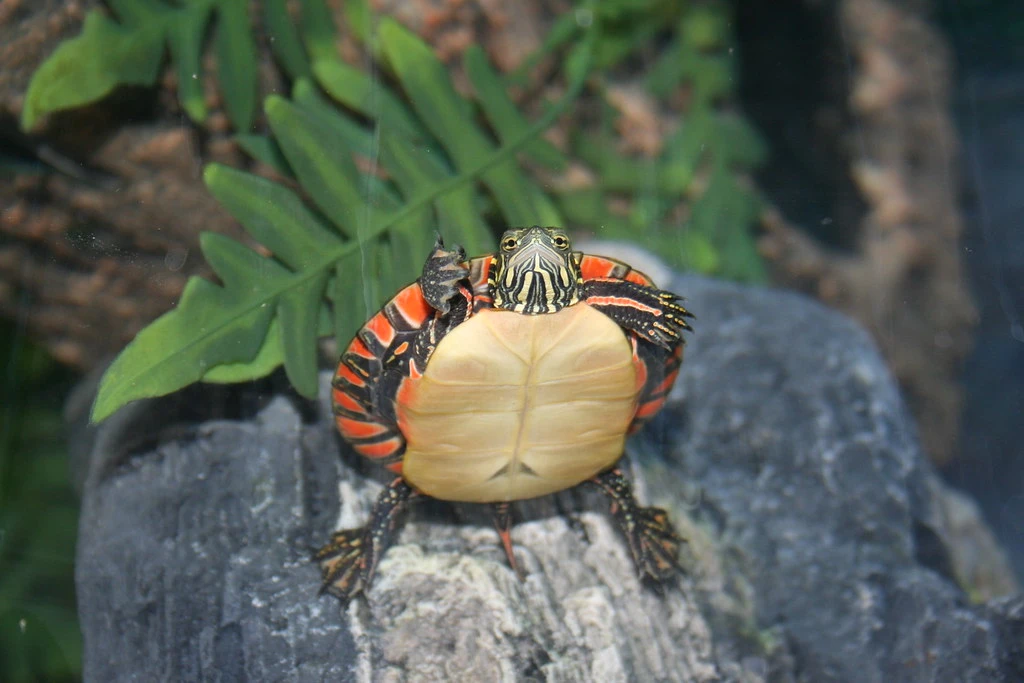
Using the tips in this guide, you can extend your painted turtle’s lifespan to 25+ years, whether indoors or outdoors.
Because of their capacity for longevity, you must plan for a long-term commitment and regular health checks before getting a Southern Painted Turtle for your enclosure.
Growth Considerations
Measure your pet’s size before buying a tank. If you start with a hatchling or juvenile Southern Painted Turtle, ensure you upgrade its tank as it grows into adulthood. The standard sizes are 20 gallons for hatchlings and juveniles and 40+ gallons for adults.
Ongoing Care
Maintain consistent feeding routines, basking times, and filtration for clean water. I recommend using high-quality automated tools for turtle care longevity.
Legal Notes
If you plan on owning a southern painted turtle, you must ensure compliance with local wildlife regulations. Google the relevant laws in your area and ask questions.
Conclusion
You’re at the end of this Southern Painted Turtle care guide, and I hope you’ve enjoyed learning about this interesting pet. As a visually stunning and relatively low-maintenance pet, it’s an ideal beginner aquatic turtle species.
Check the local laws concerning owning a Chrysemys picta dorsalis pet turtle and provide proper care and planning for long-term success.

